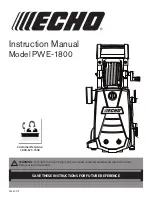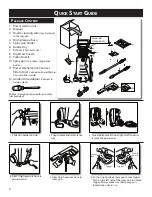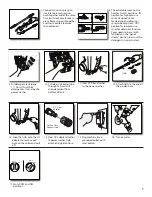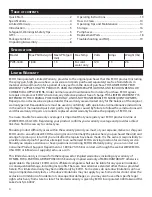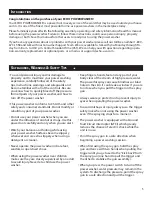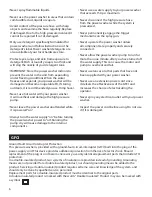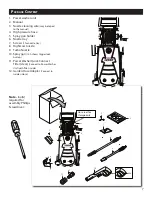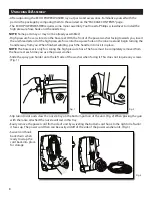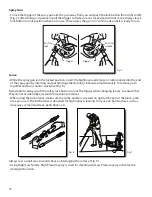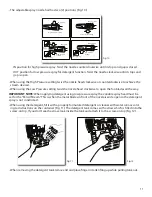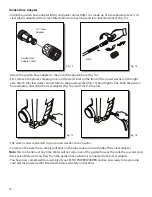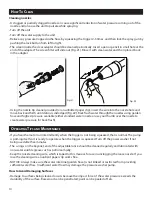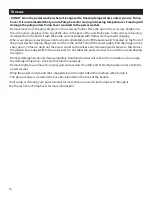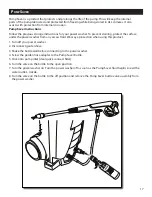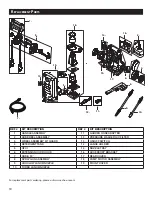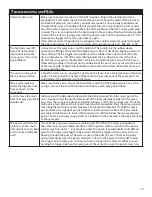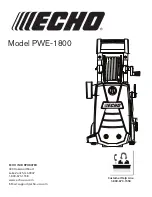
H
oW
t
o
c
Lean
o
PeratinG
t
iPS
and
m
aintenance
Cleaning nozzles
• A clogged or partially clogged nozzle can cause significant reduction of water pressure coming out of the
nozzle and/or cause the unit to pulsate while spraying.
• Turn off the unit
• Turn off the water supply to the unit
• Relieve any pressure trapped in the hose by squeezing the trigger 2-3 times, and then lock the spray gun by
pushing the lock button from left to right.
• The screen inside the clear adapter should be cleaned periodically. Insert a pen or pencil in small hole at the
end of the adapter. The screen filter will slide out (Fig. 21). Rinse it with clean water, and then place it back
in the adapter.
• Using the nozzle tip cleaner provided (or an unfolded paper clip), insert the wire into the nozzle hole and
move back and forth until debris is dislodged (Fig. 22). Back flush water through the nozzles using garden
hose and highest pressure available (either standard water nozzle or use your thumb over the nozzle to
create water pressure for back flush).
Fig. 21
Fig. 22
• If you hear the motor run intermittently when the trigger is not being squeezed, that is normal. The pump
is priming itself so it is ready to operate when the trigger is squeezed. Turn off the power washer if not
being used after five minutes.
• The o-rings on the bayonet end of the adjustable lance should be cleaned regularly and lubricated with
non-water soluble grease such as petroleum jelly.
• Keep the nozzle cleaning wire, which is taped to this manual, for use in unclogging the lance nozzle. If you
lose the cleaning wire an unbent paper clip works fine.
• NOTICE: Always make sure the water inlet line (garden hose) is not kinked or restricted from providing
sufficient water flow. Insufficient water flow may damage the pressure washer pump.
How to Avoid Damaging Surfaces
• Damage to surfaces being cleaned occurs because the impact force of the water pressure exceeds the
durability of the surface. Bare wood can be penetrated; paint can be peeled off, etc.
14

